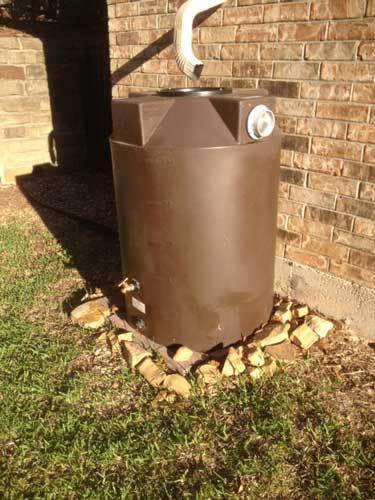
When people imagine rainwater harvesting, they often think of a 50 gallon plastic barrel or 100 gallon water tank that collects the rain flowing off a residential roof. These collection devices are handy for gardeners who want to use pure rainwater on their lawns and plants, but most people find that they quickly outgrow these small systems.
“Pure rainwater is ideal for plants,” said Steven Sweeney, a hobby gardener and president of Rain Harvesting Supplies, Inc., an online retailer that sells water tanks and rain harvesting components to installers and do-it-yourselfers. “Rain is soft water and free of the minerals, chemicals and other additives you find in treated city water. Plus, rainwater is slightly acidic. Most organically grown plants prefer slightly acidic soil, so rain is excellent for organically grown vegetables or flowers.”
Collecting rainwater is easy. If you have a roof, you already have a collection surface. Clean gutters and downspouts are a bonus that will help you direct the rain to your water tank or collection container. The average 25-foot by 40-foot roof can collect approximately 600 gallons of water during a 1-inch rainfall, which demonstrates how inefficient a simple 100 gallon water tank can be if you need a reliable, backup water supply during the driest times of the year.
“That’s why many gardeners who have tried the small barrels eventually install a 1,000 gallon water tank or even larger ones that can store more,” Sweeney said. “The 100 gallon water tank just doesn’t do the job appropriately. Everyone wants to collect as much water they can when it rains. It’s heartbreaking for gardeners to see their water barrels overflowing during a good rain. They lose valuable water that they should be capturing.”
Most residential gutters are about 5 or 6-inches wide with downspouts attached. Simply place the water tank on a flat surface near a downspout (preferably the one most convenient to your garden or lawn) and reroute the downspout into the tank. With a small rain barrel or 100 gallon water tank, you’ll rely on gravity to generate water pressure, which causes the rainwater to flow out of the tank and through your water hose. When using a more substantial water tank, install an electric water pump that filters the rain before it enters your tank to deliver clean water when you turn on the hose. Rainwater can be used to water plants, wash cars, flush toilets and do other jobs, but it is not drinkable unless it has been specially treated.
“Check the legality of collecting rainwater in your area,” Sweeney said. “In some states, such as Colorado, it is currently illegal to collect and hold rain for reuse, although those laws may be changing in the future. Collecting rainwater is a great thing to do. Every time you use rainwater instead of city water, you conserve a precious natural resource, and because rainwater is free, you save money. But don’t start out with a 100 gallon water tank. Make the investment in a good quality tank that will store a considerable about of water so its available when you need it.”
